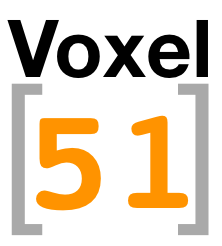Extensible Tools for Analytics in Public Safety

Voxel51
PSCR partnered with Voxel51 under the PSIAP to develop “ETA,” a core video analytics infrastructure that not only brings the public safety analytics capabilities up to modern advances but does so in a way that makes it plausible for widespread adoption and extension in the public safety community. Put simply by Voxel51 co-founder and CEO, Jason Corso, “Our goal was to bring the many advances we see in the research arm of computer vision and artificial intelligence into a greater readiness level for actual deployment and practice by public safety.” - November 2019
Read more about the outcomes and impacts from Voxel51 here.
Quick Resources
Meet the Team
Principle Investigator: Jason Corso
Voxel51
Email: Info [at] voxel51.com (subject: PSIAP%202017) (Info[at]voxel51[dot]com)
Website: http://voxel51.com
Project Overview
Our primary goal is to provide the core video analytics infrastructure both for the PSIAP program and the greater public safety community. We will do so in an open and extensible fashion that catalyzes a community of innovation around the open infrastructure. We expect our project—ETA: Extensible Tools for Analytics in Public Safety—to usher public safety analytics and the protocols, standards, and capabilities thereof into a new-level of capability not possible with existing mechanisms, tools, or organizations.
To that end, we address C.2 Public Safety Analytics: Analytics Tools and Frameworks in a comprehensive manner with an emphasis on video analytics. Our committed public safety organization (PSO) partners are Oakland PD and Baltimore PD. We also note that we have begun conversations with two other PSOs—the St. Louis Metro PD through REJIS and the Detroit PD—that we are confident will come onboard during the life of the project. The ETA project has three objectives (below) that, together, overcome crippling technical and practical limitations of existing analytics tools and practices.
ETA Software Infrastructure
The heart of ETA is an open software infrastructure that will provide extensible tools for video analytics. We will develop two mechanisms for delivering ETA to public safety groups. The first mechanism is a software-as-a-service, or cloud, delivery system. The second mechanism is an enterprise-style software system that will be installable on a single end-user’s machine. With our PSO partners, we will study both mechanisms and determine when each is more effective.
ETA Video Processing and Analytics
Within the software infrastructure, we will implement and deploy a suite of modern core analytics components, including low-level tools like stabilization and high-level modules like vehicle detection and attribute description.
We will also investigate new methods to realize efficient analytics that allow for fast dynamic routines at the edge as well as analytics representations that preserve the privacy of the individuals present, two critical factors for widescale deployment.
ETA Impact and Case Studies
We will work closely with our committed PSO partners in Oakland and Baltimore to understand their needs and the impact that our tools can provide to them. To that end, we will conduct two case studies: target re-acquisition and linguistic description retrieval. These are both forensic case studies by nature and we will measure key performance indicators (KPIs) such as accuracy, false alarm rate, and compute costs. Finally, we will conduct impact studies for ETA with our PSO partners.
Why Voxel51?
Although Voxel51 is a new and for-profit company, we believe it is best-suited to achieve these goals of providing a lasting, open, and extensible architecture for video analytics in public safety. We are better than a University team for this purpose because we are not constrained by what can be published, and we are professional computer vision engineers and developers. We are better than all other existing analytics companies in this space because we are not constrained by existing proprietary concerns that yield closed source tools or by existing high-priced models; our planned revenue stream is not in the infrastructure itself but rather in training and deployment as an appliance. We will develop the open framework and essentially give it away to the public safety community while catalyzing a community of open innovation around it.

